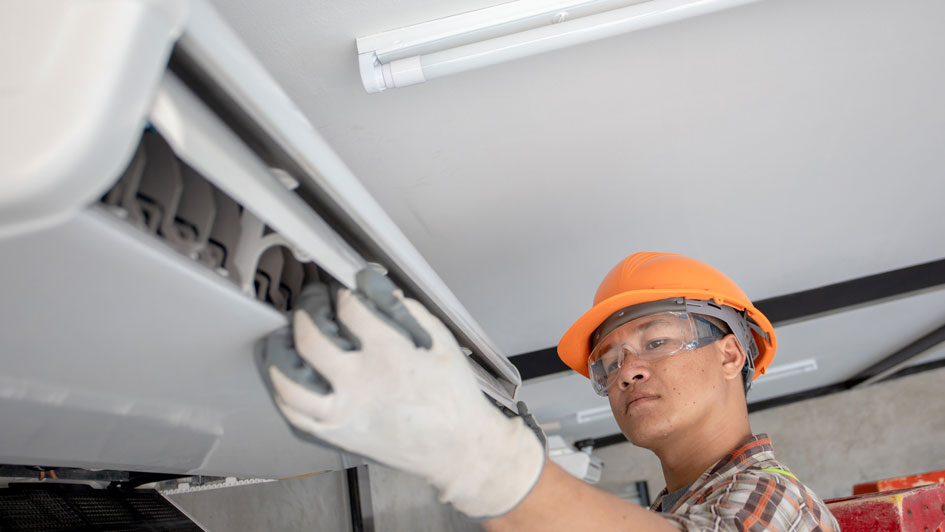
When shopping for a heating and cooling system for your residence, it’s essential to choose one that balances efficiency, functionality and the impact on your wallet. That’s why many property owners use mini-splits for comfort in their home.
Mini-splits—often known as ductless mini-splits—offer a variety of advantages that make them an appealing option for both homes and businesses. They're extremely energy efficient, decreasing energy consumption and saving on utility bills, because they don't have the energy losses associated with the ductwork found in traditional HVAC systems. They also permit users to control the temperature in each room, boosting overall comfort while saving energy.
If you’re considering mini-split installation in Fort Lauderdale, it’s necessary to first find out if these devices are recommended for your living situation. Here, we’ll examine how mini-splits stack up against other heating and cooling systems.
What a Mini-Split Is and How It Works
A mini-split, or ductless mini-split, is a heating and cooling device that doesn't need ductwork to function. It's a good option in homes that don't have any air ducts and for homes with rooms that aren’t served well by the home's existing HVAC system.
A mini-split system is made of two main components: an outdoor compressor/condenser and an indoor air-handling unit. These are attached by a conduit containing the power cable, refrigerant tubing, suction tubing and a condensate drain.
Here's how it works: the exterior compressor distributes the refrigerant necessary for heat exchange through the coils and the air handler. The interior unit draws in air from the room, cools or heats it over the coils and pushes the conditioned air back into the room.
Mini-Split vs. Central Air
Mini-splits are good for targeted cooling in certain rooms or zones of your home. They are outstanding for energy efficiency because they only provide hot or cold air for the areas you want. However, they may not blend seamlessly into every room due to their wall-mounted indoor units.
Conversely, a central air system uniformly chills your entire home, producing consistent comfort levels throughout. Its ductwork is hidden away, preserving the aesthetics of your home. On the other hand, it may not be as energy efficient as a mini-split, especially in quite sizeable homes or residences where certain spots may not need continuous conditioning.
Mini-Split vs. Window AC/Window Unit
Mini-splits are usually more energy efficient and less noisy than a window air conditioning unit and are useful for cooling air in multiple rooms. This is why mini-splits are a convenient alternative for many homeowners. They also use a type of refrigerant that is more environmentally safe, reducing their environmental impact. These systems can even add value to your home due to their durable nature and superior cooling capabilities. However, they come with a higher initial investment.
On the contrary, window air conditioners are less expensive up front. They are often a good fit for homes that can't accommodate a central air system or for families with budget constraints. In spite of these advantages, window units can utilize up to 40% more energy than ductless mini-split systems and often are louder.
Mini-Split vs. Portable AC
The answer to what is better, a ductless mini-split or a portable air conditioning unit, depends on your priorities. If your main focus is energy efficiency and cooling capability, a mini-split is considered far superior to a portable AC unit. However, if funding is a key concern, a portable AC is less expensive.
Mini-Split vs. Gas Furnace
The choice between a mini-split system and a gas furnace depends on an assortment of factors which can include the climate in your city, home size, energy efficiency desires and budget.
A mini-split system most of the time is more energy efficient than a gas furnace. It can heat and cool distinct areas inside of your home, providing custom climate control in targeted rooms. Mini-splits also are generally quieter and have a higher up-front cost, but their operating costs are usually smaller due to their superior energy efficiency.
On the other hand, a gas furnace can be a very effective heating source, particularly in colder climates where mini-split heat pumps may not be able to maintain comfort levels in the bitter cold. Even though they are less energy efficient than mini-splits, gas furnaces typically have lower initial costs. Having said that, their operating costs can be greater, especially if natural gas prices skyrocket.
Mini-Split vs. Heat Pump
Mini-splits and heat pumps operate using the process of heat transfer. They are both energy efficient, but a heat pump's ductwork can use more power. This difference aside, the choice between a mini-split and a heat pump often relies on individual needs and circumstances.
For example, if you are living in a warmer climate and mainly need cooling, a mini-split system might be a good choice. However, if you want both heating and cooling and already have ductwork in your home, a heat pump could be a more efficient option.
Mini-Split vs. Space Heater
In regards to heating and cooling a household, mini-splits and space heaters each have strengths and weaknesses. However, for total efficiency, versatility, comfort and safety, mini-splits stand out. Mini-splits supply superior energy efficiency because they deliver conditioned air right to different zones and can serve several rooms at once.
Space heaters are much less expensive to buy but are typically used only for heating a small area or just one room. They also are usually less energy efficient. Unlike mini-splits, space heaters do not deliver cooling. The most significant drawback for space heaters is the danger of fire. Industry experts say some 1,700 fires annually involve space heaters.



